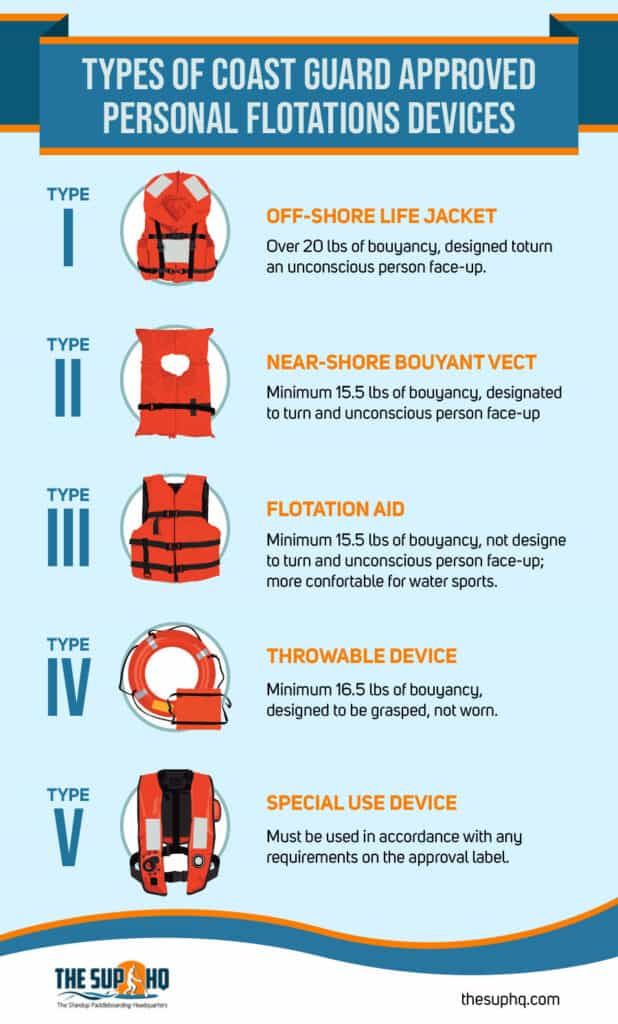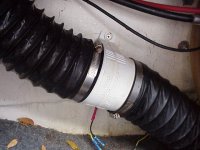Virtual VSC
 You can use this page to check your own boat. We suggest you print the form that we use to also use as a guide while performing this self-inspection. You can get the form here and it requires that you have the free Adobe Acrobat reader installed on your computer. If you do not have the reader, you can download a copy from here: Adobe Acrobat Reader.
You can use this page to check your own boat. We suggest you print the form that we use to also use as a guide while performing this self-inspection. You can get the form here and it requires that you have the free Adobe Acrobat reader installed on your computer. If you do not have the reader, you can download a copy from here: Adobe Acrobat Reader.
After you have completed the self-examination, you can request that one of our examiners perform an actual Vessel Safety Check by going to our Vessel Safety Check Page and submit your request accordingly.
Note that in addition to the minimum federal requirements stated here, the owner/operator may be required to comply with other regulations and/or laws specific to the state in which their recreational vessel is registered or operated. To ensure compliance with state boating laws, boaters should contact the appropriate boating agency in their area for additional information.
Click here to g to the USCG Boating Safety Reference Page review many safety and regulatory materials..
To download a copy of the U.S. Coast Guard’s Federal Requirements Brochure for Recreational Boaters please click here.
Item 1 - Display of Numbers: |
|||||||||||||||||||||||||||||||||||
| The display of numbers depends on wether the boat is state registered or documented with the US Coast Guard. | |||||||||||||||||||||||||||||||||||
|
State Registered Vessels: The boat's registration number must be permanently attached to each side of the forward half of the boat They must be plain, vertical, block characters, not less than three (3) inches high, and in a color contrasting with the background. A space or hyphen must separate the letters from the numbers. Place State tax sticker according to State policy. (e.g. CA 1234 AB or CA-1234-AB) |

|
||||||||||||||||||||||||||||||||||
|
Documented Vessels: The GC Documentation Number needs to be engraved/affixed onto a placard or board using characters at least 3" in height in a manner in which it can not be altered. The placard then must be permanently affixed to the hull. Engraving the doc number into the hull or bulkhead, then coloring the engraving is also acceptable.
|

|
||||||||||||||||||||||||||||||||||
Item 2 - Registration / Documentation: |
|||||||||||||||||||||||||||||||||||
|
Registration or Documentation(COD) papers must be on board and available. Documentation numbers must be permanently marked on a visible part of the interior structure. The documented boat's name and hailing port must be displayed on the exterior hull in letters not less than 4 inches in height. To be documented a boat must be 5 net tons or greater.
|
 
|
||||||||||||||||||||||||||||||||||
Item 3 - Personal Flotation Devices (PFD): |
|||||||||||||||||||||||||||||||||||
| Acceptable PFDs (also known as Life Jackets) must be U.S. Coast Guard approved, in good serviceable condition, and of suitable size for the each person on the boat. Recommended PFD type for "all purpose use" are Type II / LEVEL 100. | |||||||||||||||||||||||||||||||||||
PFD Types:
Children must have properly fitted PFDs designed for children. Wearable PFDs shall be "readily accessible." PFDs shall NOT be stored in unopened plastic packaging. For Personal Watercraft riders, the PFD must be worn and indicate an impact rating. Boats 16 Feet or longer, must also have one Type IV.
|

|
||||||||||||||||||||||||||||||||||
Item 4 - Visual Distress Signals (VDS): |
|||||||||||||||||||||||||||||||||||
|
Recreational boats 16 feet and over used on coastal waters or the Great Lakes are required to carry a minimum of either (1) Three day and three night pyrotechnic devices; (2) One day non-pyrotechnic device (flag) and one night non-pyrotechnic device (auto SOS light); or (3) a combination of (1) and (2).
Recreational boats less than 16 feet on coastal waters or the Great Lakes need only carry night visual distress signals when operating from sunset to sunrise. It is recommended, but not required, that boats operating on inland waters should have some means of making a suitable day and night distress signal. The number and type of signals is best judged by considering conditions under which the boat will be operating. Alternatives to pyrotechnic devices (flares) include:
|

|
||||||||||||||||||||||||||||||||||
Item 5 - Fire Extinguishers: |
|||||||||||||||||||||||||||||||||||
|
Fire extinguishers are required if one of the following conditions exists: (1) Inboard engine(s); (2) Double bottom hulls not completely sealed or not completely filled with flotation materials; (3) Closed living space; (4) Closed stowage compartments that contain flammable materials or (5) Permanently installed fuel tanks.
Recreational vessels less than 26', and propelled by outboard motors are NOT required to have fire extinguishers unless one or more of the conditions (2-5) listed above applies. Fire extinguishers must be USCG Approved, be readily accessible, and verified as serviceable. Minimum number of extinguishers required: Acceptable Fire Extinguisher Classifications Based On Vessel Model Year
Note Vessels model year between 1953 and 2017 may carry either 5‐B, 20‐B rated extinguishers with date stamp or B‐I/II rated fire extinguishers
Fire Extinguisher Requirements
Rechargeable & Serviceable Extinguishers These units for commercial use must be serviced/inspected yearly. There is no law for inspection of these units when used recreational, however it is recommended that these are inspected at least every 3-5 years.
|
|
||||||||||||||||||||||||||||||||||
Item 6 - Ventilation: |
|||||||||||||||||||||||||||||||||||
| Boats with gasoline engines in closed compartments, built after 1 August 1980 must have a powered ventilation system. Those built prior to that date must have natural or powered ventilation.
Boats with closed fuel tank compartments built after 1 August 1978 must meet requirements by displaying a "certificate of compliance." Boats built before that date must have either natural or powered ventilation in the fuel tank compartment.
|
 |
||||||||||||||||||||||||||||||||||
Item 7 - Backfire Flame Control: |
|||||||||||||||||||||||||||||||||||
| All gasoline powered inboard/outboard or inboard motor boats must be equipped with an approved backfire flame control device.
|
 |
||||||||||||||||||||||||||||||||||
Item 8 - Sound Producing Devices / Bell: |
|||||||||||||||||||||||||||||||||||
| To comply with Navigation Rules and for distress signaling purposes all boats must carry a sound producing device (whistle, horn, siren, etc.) capable of a 4-second blast audible for ½ mile.
NOTE: Boats larger than 39.4 ft. are no longer required to have a bell
|
 |
||||||||||||||||||||||||||||||||||
Item 9 - Navigation Lights: |
|||||||||||||||||||||||||||||||||||
| All boats must be able to display navigation lights between sunset and sunrise and in conditions of reduced visibility.
Boats 16 feet or more in length must have properly installed, working navigation lights(port/starboard bow, steaming light, stern light) and an all-around anchor light capable of being lit independently from the red/green/white "running" lights. Vessels less than 16' in length must have at least one all around light when operating between sunset and sunrise.
|
 |
||||||||||||||||||||||||||||||||||
Item 10 - Pollution Placard: |
|||||||||||||||||||||||||||||||||||
| Boats 26 feet and over with a machinery compartment must display an oily waste "pollution" placard.
|
 |
||||||||||||||||||||||||||||||||||
Item 11 - MARPOL Trash Placard: |
|||||||||||||||||||||||||||||||||||
|
Boats 26 feet and over in length must display a "MARPOL" trash placard. Boats 40 feet and over must also display a written trash disposal plan.
|
 |
||||||||||||||||||||||||||||||||||
Item 12 - Marine Sanitation Devices: |
|||||||||||||||||||||||||||||||||||
| Any installed toilet must be a Coast Guard approved device. Overboard discharge outlets must be capable of being sealed.
|
 |
||||||||||||||||||||||||||||||||||
Item 13 - Navigation Rules: |
|||||||||||||||||||||||||||||||||||
|
Boats 39.4 feet and over must have on board a current copy of the Navigation Rules.
|
 |
||||||||||||||||||||||||||||||||||
Item 14 - State and/ or Local Requirements: |
|||||||||||||||||||||||||||||||||||
| These requirements must be met before the "Vessel Safety Check" decal can be awarded. A boat must meet the requirements of the state in which it is being examined.
Your Vessel Examiner will provide these guidelines
|
|||||||||||||||||||||||||||||||||||
Item 15 - Overall Vessel condition: |
|||||||||||||||||||||||||||||||||||
|
As it applies to this Vessel. Including, but not limited to: |
|||||||||||||||||||||||||||||||||||
|
a. Deck free of hazards and clean bilge:
The boat must be free from fire hazards, in good overall condition, with bilges reasonably clean and visible hull structure generally sound. The use of automobile parts on boat engines is not acceptable. The engine horsepower must not exceed that shown on the capacity plate.
|

|
||||||||||||||||||||||||||||||||||
|
b. Safe Electrical:
The electrical system - Must be protected by fuses or manual reset circuit breakers. Switches and fuse panels must be protected from rain or water spray. Wiring must be in good condition, properly installed and with no exposed areas or deteriorated insulation. Batteries must be secured and terminals covered to prevent accidental arcing. If installed, self-circling or kill switch mechanism must be in proper working order. All PWCs require an operating self circling or kill switch mechanism.
|

|
||||||||||||||||||||||||||||||||||
|
c. Fuel Systems:
Portable fuel tanks (normally 7 gallon capacity or less) must be constructed of non-breakable material and free of corrosion and leaks. All vents must be capable of being closed. The tank must be secured and have a vapor-tight, leak-proof cap. Each permanent fuel tank must be properly ventilated.
|

|
||||||||||||||||||||||||||||||||||
| d. Safe Galley and Heating Systems:
System and fuel tanks must be properly secured with no flammable materials nearby. Propane/LPG tanks must be stored externally to all living space in a separate and ventilated compartment. All propane/LPG systems must be installed with a functioning solenoid cut-off switch.
|
 |
||||||||||||||||||||||||||||||||||
|
e. Engine Cutoff Switch (ECOS):
Required on all vessels <26' manufactured after 12/2019; must produce lanyard during VSC. All PWCs requiring self-circling or kill switch mechanisms. If installed, self-circling or kill switch mechanisms must be in proper working order. Vessels where the main helm is located in a covered or protected area do not require an ECOS. |

|
||||||||||||||||||||||||||||||||||

